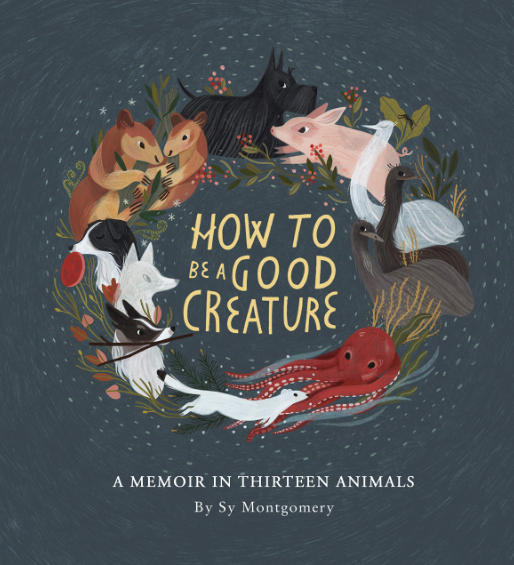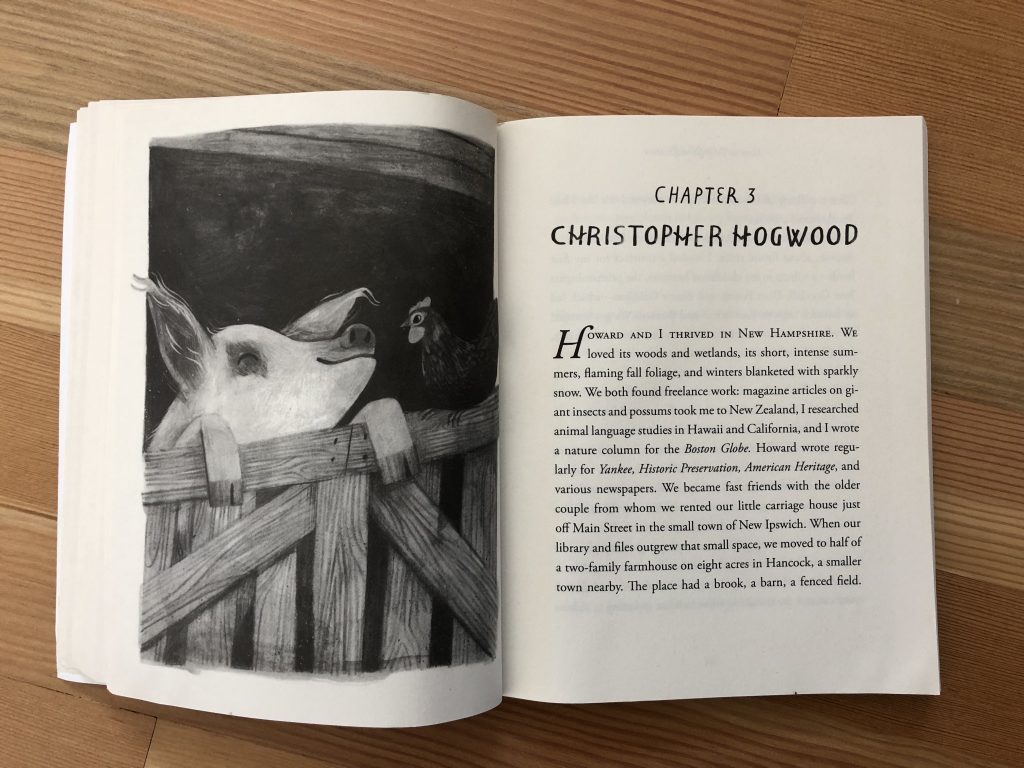 Who is this extraordinary book for, exactly? It’s hard to say.
Who is this extraordinary book for, exactly? It’s hard to say.
Sy Montgomery is a renowned nature writer who’s authored more than ten adult nonfiction books, including The Soul of an Octopus, which was a finalist for the National Book Award in 2015. Over her impressive career she’s swum with piranhas and electric eels in the Amazon, searched for tree kangaroos in New Guinea, and experienced near-death experiences studying gorillas in Zaire. Montgomery is also the author of 16 books for kids, including a fantastic biography of Temple Grandin aimed at middle graders.
Her latest, How to be a Good Creature: A Memoir in Thirteen Animals is one of the rare non-fiction books that you could arguably call middle grade, YA or adult. The advance copy I was sent came to me via from The Houghton Mifflin young readers PR team. And the very sweet cover art by Rebecca Green and large-point type didn’t exactly fight the impression that this was a book intended for 10 and 12 year-olds. It’s a memoir organized by animal: Thirteen chapters covering thirteen animals (from dogs and pigs to tree kangaroos), each offering insight into the creatures and also Sy’s growth as an individual.
 But as I read it, I started to wonder.
But as I read it, I started to wonder.
There was a lot of dark stuff in there about the author’s depression, career crises and parental discord. There was even one stomach-turning incident involving the author’s mother and a virginity check.* But mostly, the book was about the wonder of these incredible animals. As I plowed through the book I kept thinking to myself that I wanted to share these fascinating stories with my own kids.
Throughout the book Montgomery befriends the unlikeliest of creatures, including a tarantula in French Guiana and an octopus at the New England Aquarium (I know the word “befriend” sounds ridiculous, but it happens). And her passion for her calling is totally inspiring — at age 26, she’s sleeping in a tent in South Australia wilderness, mapping the burrows of wombats, digging through emu droppings and having the time of her life. For a young person dreaming about what they will be when they grow up, it may be totally eye opening.
So, who is this book for, really? As it turns out, it’s officially an adult non-fiction book. But I would hand it to any teenager with an appreciation for nature, animals or gorgeously written confessional personal essays.
*NB: For most 8-12 year-olds, there’s probably too much meditative midlife-crises stuff to keep them interested all the way through. But the chapters on the pig (“Christopher Hogwood,” chapter 3), the tarantula (“Clarabelle,” chapter 4), and the octopus (“Octavia,” chapter 9) will be totally captivating.
